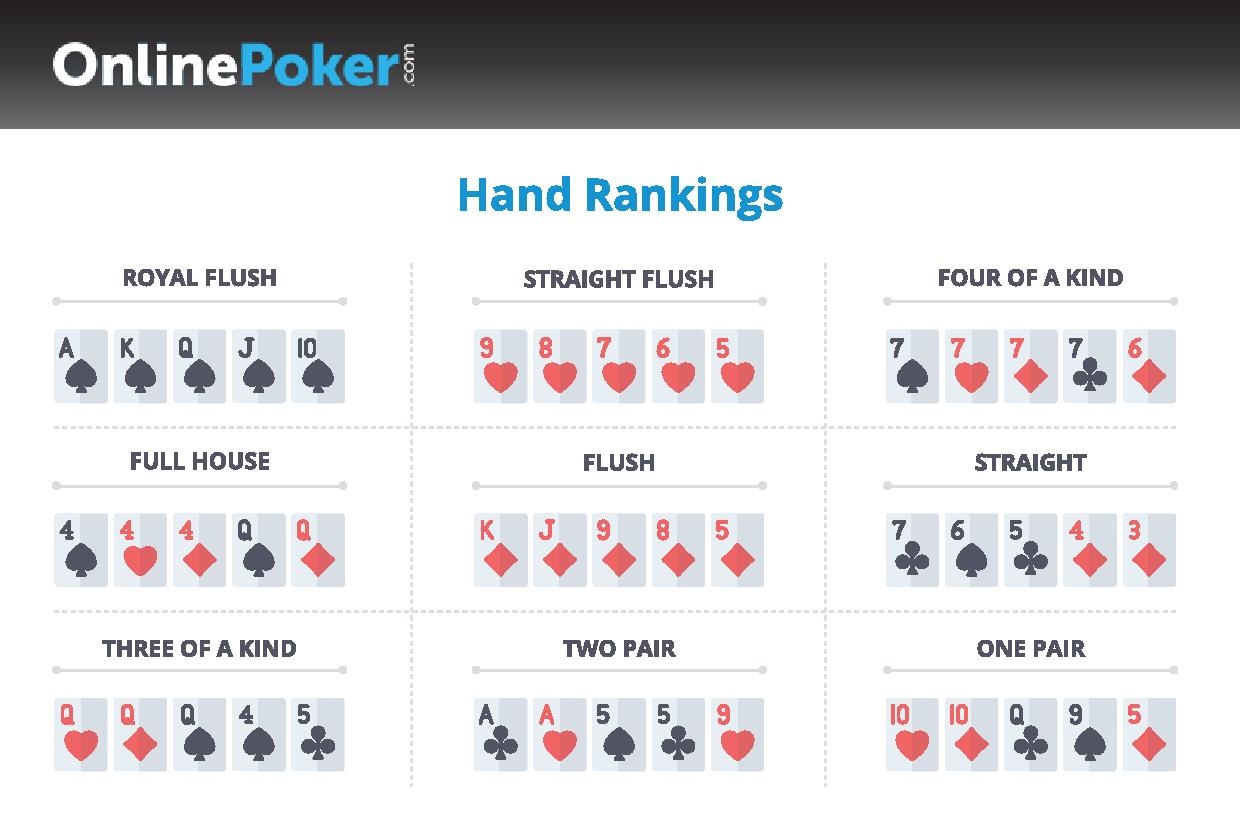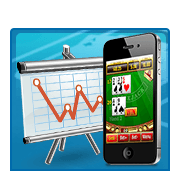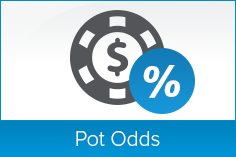Starting Hands In Poker

Knowing what hands to play in poker and what ones to fold is probably the first (and most important) skill you'll acquire when beginning your poker journey.
Many players come to Texas Hold'em and immediately set about playing too wide a range of hands, and in all the wrong positions. Pretty soon, they've gone broke, gone on tilt, and have given up the game for good.
Learning smart starting hand selection isn't rocket science, however, and even a basic understanding of starting hands can help you win (and save) a lot of cash over the long term.
Basic Starting Hands - Texas Hold'em
“What hands you play in Hold'em is as much about your position at the table as it is the hands yourself.

Here's a useful downloadable chart explaining hand rankings and what starting hands you should play. Click to download.
9-9, for example, is a good raising hand in late position if no-one has raised the pot beforehand, but in early position (the small or big blind) you can find yourself in trouble if you're first to act after the flop.
The first thing to do is group starting hands together: Premium, Semi-Premium and Marginal.
Premium hands are things like A-A and K-K. With these hands you'll be raising and re-raising, in every position at the table.
Next, Semi-Premium hands are ones like A-K, Q-Q, J-J, 10-10 and K-Qs. With these you should raise in every position, and re-raise with them in late position only. A-K is OK to just call a raise with in early position, as if you're first to act you can comfortably check-call on a low flop, or bet out if you've hit top-pair. Remember, A-K is only 'ace-high', i.e. it has great value only if you make a pair with it.
Next, Marginal hands are a bigger group of cards. In this group you can put 9-9, J-10s, 10-9s, A-10s, A-Js, K-Js. Raise in late position only in an unraised pot and call in early position if you have value.
Assessing the Table

So, what about the rest of the starting hands? Well, in late position, you can call or raise with small pairs like 5-5, 6-6, 7-7 etc, and suited one-gappers like Q-10s or J-9s, while folding everything else is a smart move.
However, it's worth paying attention to two things: the stage of a tournament and the types of player at the table.
While this relatively tight hand selection will serve you well early on in a tournament when the blinds are low, as the tourney progresses and your stack-to-blind ratio decreases, it might be time to expand your starting hands selection.
For example, if you're in the middle stages of a tournament and are in late position with Q-10s while nursing a stack of 20 big blinds, it can be a good hand to shove all-in over the top of a raise. Much of the time you will force a fold and the value in building a pot can outweigh the odds of your hand winning.
Meanwhile, if you find yourself at a tournament table early on with lots of passive players who bet and call with a wide range of hands, you should tighten up and bet your premium hands stronger than you normally would.
Assigning Hand Ranges
While knowing what hands YOU should start with, knowing what your opponents are playing is the next thing to learn.
As you improve, assigning hand ranges to other players is how you can learn to make value judgments on whether to call or fold.
Don't make the mistake of putting an opponent on one or two hands; it's important to assign a wide range of possible starting hands.
Example 1
Let's say you're playing a tournament and you're into the second level when blinds are still low. You raise in early position with J-J and two players call, plus the player on the button.
Let's try to work out what that player on the button could have, as he's last to act and is in the best position. He's on the button, yet he's just called. You know he's tight but will raise with strong hands, so we can therefore strike off premium hands like A-A, K-K and A-K (and probably Q-Q) from his likely starting hands.
The flop comes 3d-7s-6s and you bet with your jacks. The first two players fold and the button player calls.
Now, what could he have? He's called a raise pre-flop and has just called a bet, so he won't have over-cards like A-Js, A-10s, Q-J, K-Q, K-Js etc. If he had pocket 7s or 6s he would have raised with his trips so those are out too.
He may well have called pre-flop with 7-6 or a strong 7 like A-7s, and the presence of two spades on the flop mean we can include flush draws like 10s-9s, 9s-8s, and 9s-7s.
The turn comes 9s and the opponent moves all-in after you bet out again. Your jacks now look very bad against his likely range of hands (trip sixes, trip sevens, a flush, a straight flush, or a straight) and you fold.
Get a Starting Hand Chart
While there's no starting hands chart set in stone for Texas Hold'em, it's a good idea as a novice to keep a list of good starting hands printed out and kept by your monitor.
Hand selection changes with the style of players at the table or the stage of the tournament you're playing, as well as the number of players at the table. But being disciplined with your starting hands is the key to making profits early on in your career.
Find a Hand Range Calculator Online

If you're into cash games online and are starting to use a Heads-Up Display (HUD), you will find the percentage of hands that your opponent is raising with.
This figure can be entered into one of many 'Hand Range Calculators' available online now. Just enter the percentage figure into the calculator and a list of selected hands will be displayed. For example, let's say your opponent is tightish and raises with 6% of hands. The calculator reveals that his range of hands is roughly as follows: A-A, A-Ks, A-Qs, A-Js, A-10s, A-Koff, K-K, K-Qs, K-Js, Q-Q, J-J, 10-10, 9-9 and 8-8.
Although not an exact science, hand range calculators are good to get a rough estimate of your opponent's raising hands.




